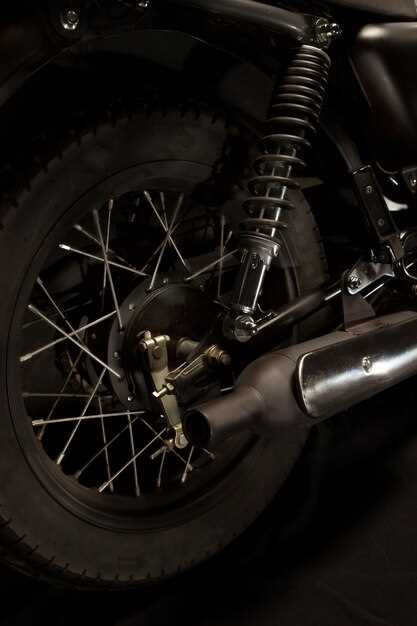
Enhancing the performance of your motorcycle on the track requires a strategic approach that balances power, handling, and rider comfort. Various modifications can take your bike to the next level, optimizing its capabilities for track days and competitive racing. This guide will delve into the best motorcycle track mods that can significantly boost your performance.
One of the primary areas to focus on is the suspension system. Upgrading your suspension can lead to better stability and handling through corners, allowing for higher cornering speeds and improved feedback from the road. High-quality suspension components, such as adjustable forks and shock absorbers, help fine-tune your motorcycle’s response to track conditions.
Another critical modification to consider is weight reduction. Reducing the overall weight of your motorcycle not only enhances acceleration but also improves braking and cornering performance. This can be achieved by replacing heavy components with lighter alternatives, such as carbon fiber fairings or a lithium-ion battery. Additionally, removing any unnecessary parts can help streamline your bike for a more agile performance.
Finally, enhancing your braking system is essential for track performance. Upgrading to high-performance brake pads and rotors can significantly improve stopping power and reduce braking distance, allowing for greater confidence when entering corners at high speeds. Investing in a radial master cylinder can further enhance brake feel and modulation, making your riding experience safer and more enjoyable.
Optimizing Suspension Settings for Superior Cornering
To achieve superior cornering performance on a motorcycle, fine-tuning suspension settings is crucial. Proper adjustments not only enhance stability but also improve grip and responsiveness through corners. Start by setting your motorcycle’s sag, a critical measurement that affects how the bike sits under load. Aim for 30-35mm of sag for the rear and slightly less for the front. Use a measuring tape to assess the distance from the rear axle to a fixed point on the bike after sitting on it.
Next, adjust the compression and rebound damping. Compression damping controls how quickly the suspension compresses when hitting bumps, while rebound damping manages how fast it returns to its original position. For cornering, a slightly stiffer compression setting will help prevent bottoming out during aggressive lean angles. However, don’t overdo it; excessive stiffness can lead to a harsh ride. A good starting point is about 2-3 clicks stiffer on the compression for the front and rear.
On the rebound side, aim for a setting that allows the suspension to return smoothly without causing a bounce. If your motorcycle feels unsettled after hitting a bump, it may need more rebound damping. Fine-tune both settings incrementally, testing each adjustment to find the sweet spot that provides stability and comfort.
Furthermore, ensure that the fork oil level is correct and the oil itself is new, as this plays a pivotal role in how your suspension performs. Consider upgrading to aftermarket fork springs tailored to your weight and riding style if you consistently find the stock springs inadequate for your needs.
Finally, remember to maintain proper tire pressure, as it directly influences how your suspension behaves. A balanced tire setup complements your suspension adjustments and enhances cornering grip. Monitor and adjust tire pressure according to the manufacturer’s recommendations based on your riding conditions.
By meticulously optimizing these suspension settings, you will experience improved cornering capability, providing greater confidence and control during your rides.
Choosing the Right Tires for Maximum Grip

When it comes to enhancing performance on the track, selecting the right tires is crucial for achieving maximum grip. Tires are the only contact point between your motorcycle and the track surface, making their quality and specifications vital for optimized handling and stability.
Tire Composition: The rubber compound used in tire construction significantly affects grip levels. Softer compounds provide better traction, especially at higher temperatures, but they tend to wear out faster. Conversely, harder compounds offer increased durability but may sacrifice some grip. Understanding the balance between softness and longevity is essential for your specific racing needs.
Tread Patterns: The design of the tire tread plays an important role in grip. Slick tires, which have no tread, are ideal for dry conditions as they maximize contact area with the track. However, if you frequently encounter wet conditions, tires with specific tread patterns are necessary to channel water away and maintain grip. Always choose tires compatible with the riding conditions you expect.
Tire Size: Proper tire dimensions influence both handling and grip. Wider tires create a larger contact patch, enhancing overall traction. However, they might also affect steering responsiveness. It’s crucial to select a tire size that complements your motorcycle’s specifications and riding style to ensure efficient performance.
Temperature Management: Tire grip is also temperature-sensitive. Optimal operating temperatures allow tires to perform at their best. Warm-up laps are essential for achieving suitable temperatures. Invest in tire warmers if your race conditions allow, as they can help maintain the ideal temperature from the outset, enhancing grip right from the start.
User Reviews and Testing: Before committing to any tire brand or model, consider user reviews and professional tests. Feedback from experienced riders can provide insights into how tires perform under specific conditions. Look for tires that have been proven effective in similar racing environments for your motorcycle type.
In conclusion, choosing the right tires involves a careful evaluation of compound, tread pattern, size, and temperature management. Prioritizing these factors can dramatically enhance your motorcycle’s grip and overall performance on the track.
Upgrading Brake Systems for Improved Stopping Power

Upgrading the brake system is a crucial modification for enhancing the performance of any motorcycle on the track. Excellent braking is essential for maintaining control and maximizing lap times. Several key components contribute to improved stopping power, allowing riders to brake later and harder during races.
Brake Pads: High-performance brake pads made from advanced materials, such as carbon-ceramic or sintered metals, provide superior friction levels. These pads are designed to withstand high temperatures and maintain performance under extreme conditions. Upgrading to race-spec pads can significantly enhance initial bite and modulation, crucial for precise braking control.
Brake Rotors: Switching to larger or lightweight brake rotors can further improve braking efficiency. Larger rotors increase the surface area for heat dissipation and enhance the overall braking power. Floating rotors can also enhance performance by allowing for slight movements during braking, reducing distortion and improving feel.
Brake Calipers: High-performance calipers usually feature increased piston sizes and additional pistons, leading to improved clamping force on the rotor. Upgrading to multi-piston calipers offers more consistent braking performance and better modulation. Consider calipers made from lightweight materials such as aluminum to reduce unsprung weight.
Brake Lines: Replacing stock rubber brake lines with aftermarket stainless steel braided lines enhances brake feel and responsiveness. These lines resist expansion under pressure, ensuring a firmer and more instantaneous connection between the lever and calipers, which translates to better stopping performance.
Master Cylinder: An upgraded master cylinder can provide a more direct and responsive feel at the brake lever. Look for models with adjustable lever ratios, which can be tuned to the rider’s preference, offering customizable braking sensations depending on riding style.
Proper maintenance is crucial after upgrading components. Regular checks of the brake system ensure consistent performance and reliability. With these enhancements, riders will experience significantly improved stopping power, enhancing both safety and confidence on the track.